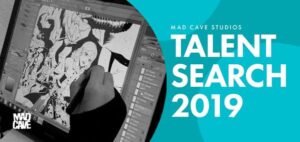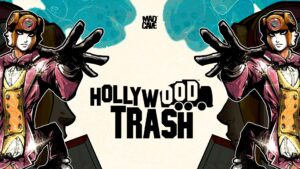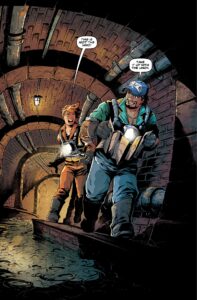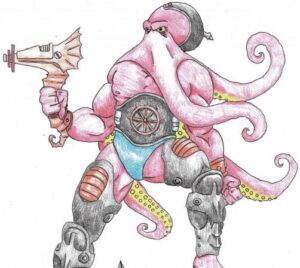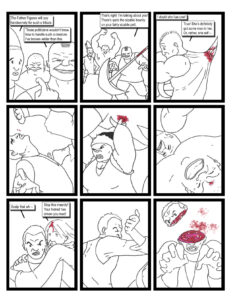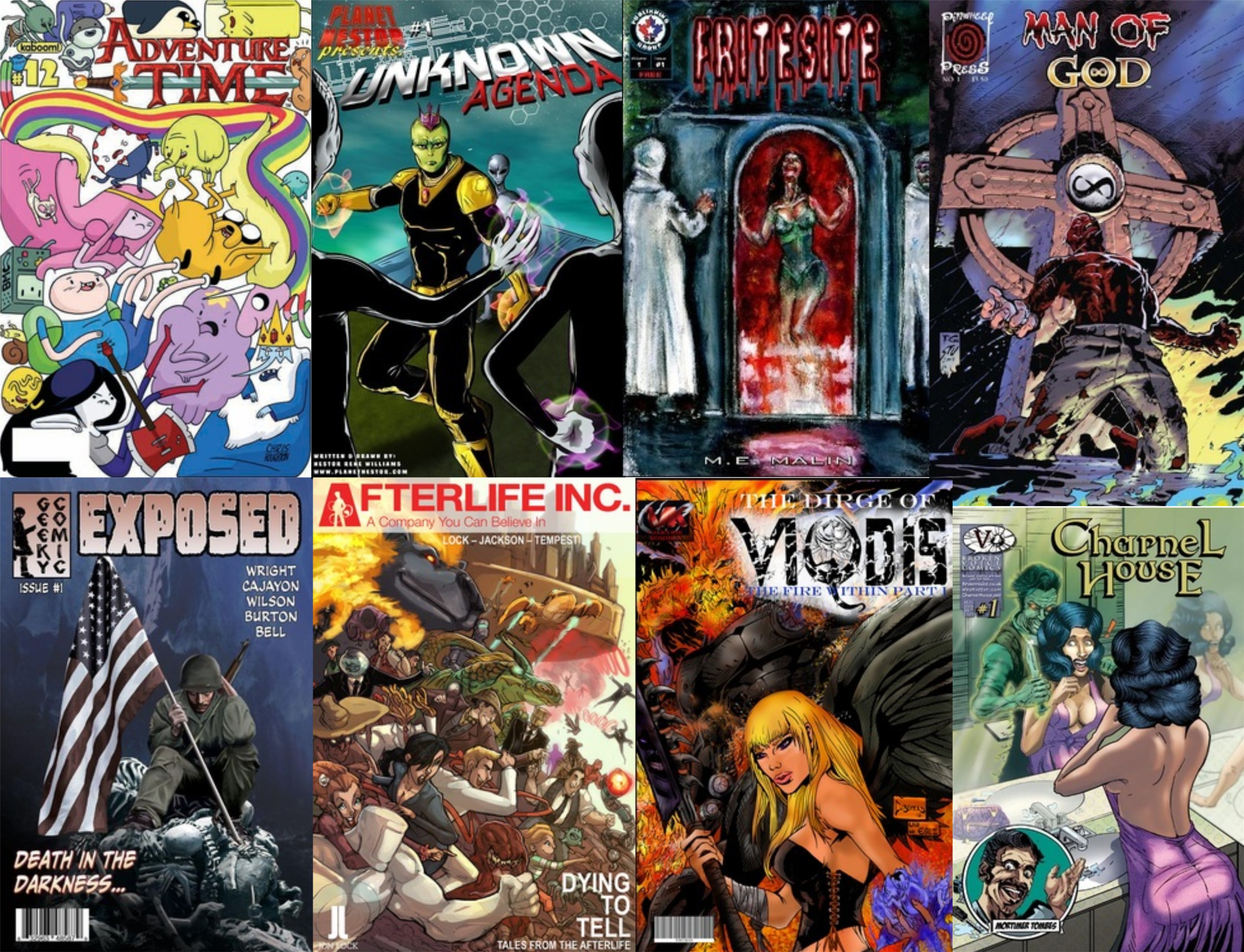He’s not only a Playwrighter and a voice on Radio, but also a comic book writer by the name of Stephen Sonneveld. And today, he’s a part of the Mind Meld!
1. Hello there, and welcome to the Mind Meld here at IndieComiX! For those who may not be aware of who you are, could you tell us a bit about yourself?
Thanks, Rob! It’s nice to be melded. In addition to writing comics, I am a Kennedy Center award-winning playwright, acted in commercials, indy projects and our scripted radio show, and am proud that my series of Bleacher Report articles throughout 2012 and 2013 were a voice in the fight to get the NFL to stop using a racist slur for the Washington team.
2. You’re one of the winners of the 2019 Mad Cave Talent Search, how’d you end up involved in that?
I was familiar with Mad Cave thanks to their terrific social media presence, so when the potential to write for them came up, I couldn’t pass it up. I wrote a 10-page writing sample based on Mad Cave’s KNIGHTS OF THE GOLDEN SUN by Mark London and Mauricio Villarreal, which was one of my favorite titles. I approached the script as though I were taking over the book; show respect to the world building readers were invested in, while contributing something new versus just retreading.
Into this Judeo-Christian landscape, I was able to incorporate Set, from the Egyptian pantheon, talking with his counterpart Lucifer. I also did some research and found out that Yahweh was the Jewish god of war. So, in the B story, Azreal tricks Michael into believing Yahweh is the missing Father, and ends releasing that destructive entity.
 3. Your first book for Mad Cave is the wild ride known as Hollywood Trash, was that something you pitched or was it something already around waiting to be developed?
3. Your first book for Mad Cave is the wild ride known as Hollywood Trash, was that something you pitched or was it something already around waiting to be developed?

HOLLYWOOD TRASH comic book and trade paperback cover; Pablo Verdugo, artist; Jose Expósito, colorist
Editor Mark Sanchez provided me the logline and some supplemental material, then let my imagination run free. The initial premise was that a movie producer made a Faustian bargain, and the totem that gave him wealth and power was mistakenly thrown away, which is why he targets the garbage men. I incorporated some of that, but instead of the Devil, tied it into California history, because I wanted to make use of the rich legends surrounding the city and state. The rock in the bracelet was from the Ohlone nation creation myth, and Grapevine tells his cult mates it was passed down from, and gave wealth and power to, railroad tycoons to William Randolph Hearst to Howard Hughes, and finally to him. The cult members believe him because they need to justify their own ambition.
About 2-issues into the gig, my friend asked me what the story was about. I asked her, when you think of Los Angeles, what’s the first thing that comes to mind? She said, “Cults.” I said, “Exactly!” (Laughs)
The cult also served a practical purpose, though. Pablo Verdugo is such a great artist, I wanted to give him something cool to draw every issue. His Masked Mage design was stellar and he has petitioned me to have action figures made, but that’s a query for Mark London! (Laughs) I also wanted the reader to feel every issue was its own self-contained adventure, really give them their money’s worth. The cult premise allowed a unique villain and setting to be featured each issue. I lived in L.A., so I was able to add small touches, like having Armenians represented.
But I still did a ton of research, which is how I learned the wildfires melted plastic sewer pipes, which became the premise for issue 3. The class divide there also stuck with me, and that became a thematic through line. We live in an age where billionaires don’t have to exist, but child activists do. That was the cultural vein I wanted to tap with this story.
You have this sociopathic group of 1-percenters who have no regard for human life, against Andi, Billy and James, who are in the filth, willing to fight fires, go into the sewers, save a coyote, all for the greater good.
And then, as you pointed out in your review, Rob, Grapevine’s true motivation for targeting the bin men was ridiculous. Yes! And it happens every day. As Raymond Chandler wrote, “It is not funny that a man should be killed, but it is sometimes funny that he should be killed for so little.” That kind of real-world villainy beats the Devil any day.
4. Given the potential PTSD that Billy might have after serving in the Military, is it possible the events of the book may be in his head thanks to what he may have?
That premise obviously works, perhaps most famously in A Christmas Carol, but I think it would be unfair to the reader at this point to say the story they invested in was just a dream. If that was the intention from the beginning, I would have planted clues, leading to the reader getting that payoff. I know you were interested in a sequel to HOLLYWOOD TRASH — and what’s more Hollywood than a sequel — but the PTSD would certainly be worth exploring there, because all three of our heroes would be experiencing it.
Andi just found out about her father’s crimes, would she turn back to drugs? James believes all life is precious, but is the guilt about Grapevine eating him up? And as you noted, Billy came into the series with emotional baggage, so how will he react now?
5. As I’m sure a number of folks are wondering, what’s next from you at Mad Cave and even outside of it?
Unfortunately, 2021 was something of a gap year for me. I slipped on an unnatural accumulation of ice in January, and left the hospital 10-months later in a wheelchair. I wanted to take a more proactive role in promoting our last two issues, and then the trade of HOLLYWOOD TRASH, but was unable to do so, and that really bothered me, especially since the response was so good. I’m grateful to sites such as yours, who took the time to review it, and thankful to comic shop owners for their support as well.
Every so often, I would see a shop owner tweet something positive about HOLLYWOOD TRASH, and that really made me feel like we were on to something, because shop owners read everything. Going forward, I would like to focus on writing new projects, and maybe get an agent to develop my current catalogue of comics, children’s books, screen and radio plays into other media.
But if the chance arose, I would definitely work with the folks at Mad Cave again. They’re good people.
6. In addition to your comics work, you’ve also done some playwrighting, how many of those works are out in the world as we speak?
In addition to HOLLYWOOD TRASH, I wrote and drew a well-received comic strip, GREYE OF SCOTLAND YARD, which readers can find on Comixology.
If people would like to see some of my short films, they can visit this Youtube page. Selections from 5 seasons of our scripted radio program THE DON’T CALL ME SWEETHEART! SHOW can be heard here.
I’ve also got oodles of free-to-read experimental comics and stories, if folks are interested.
I hope you enjoy!
7. Yowza! Sorry to hear how 2021’s gone for you! Hopefully 2022 is a lot better for you! That 10 page writing sample you mentioned sounds pretty awesome actually, along with action figures!
Thanks! (Laughs) I will never outgrow action figures. Those little, plastic buggers continue to light my imagination — and hopefully do for actual kids, today, not just us kids-at-heart.
8. You’ve mentioned work in Radio, what led to you getting involved in that? And is it something you can find only on a local station in your area or everywhere online?
My frequent collaborator Andrew Krzak and I always loved the Golden Age of Radio. Through his connections in the Chicago arts scene, Andrew found out about WLPN launching.
We created a pilot for a multi-format, scripted radio show, submitted it to their festival, and were picked up for broadcast.
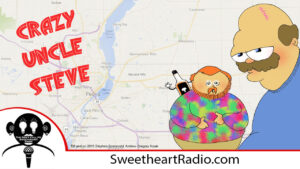
THE DON’T CALL ME SWEETHEART! SHOW promo piece; Sweetheart logo by Andrew Krzak; “Crazy Uncle Steve” art by Stephen Sonneveld
From 2015 to 2020, we did five seasons of THE DON’T CALL ME SWEETHEART! SHOW, each containing eight 2-hour episodes. For most of those, Andrew and I divided the writing chores in half, each producing 8 hours of original content every season.
We tackled every genre from adventure and comedy, to horror and historical drama, to memoirs and original songs. Journalist Erika Hobbs produced great documentary pieces, and one of our faithful listeners, writer Jack Helbig, contributed comedy and horror plays.
After Andrew and I crafted the ungodly amount of sound cues, we and our fellow cast members performed a live 2-hour broadcast every Saturday. It was transmitted over Chicago radio, but also online, where we could trace the metrics. To our surprise, we developed quite a following in Sweden, and naturally incorporated that into some of our comedy and advertising. Tack, Sverige!
Besides the selections on our YouTube channel, we are on the WLPN (105.5 FM) Mixcloud account: https://lumpenradio.com/shows/the-dont-call-me-sweetheart-show/
We’re also going to be remastering every episode and re-releasing them as podcasts, in 2022, using Anchor.fm as the platform, so hopefully more people can hear what so enraptured Swedish hearts.
9. Given how things have gone since the start of the Pandemic and with the recent inclusion of Supply and Shipping issues, how much longer do you think it’s going to be before Society in at least America finally gets back on track?
I’ll speak on this, since you asked.
The root cause of two of the world’s greatest ills — the vampiric hold of the military industrial complex that President Eisenhower warned us about and has come to pass, and the fact pollution is edging our world to literal extinction — is wealth inequality.
To my earlier point, if any normal person became a billionaire, the first thing they would do is buy their parents a house, then fix the water pipes in Flint — not build monuments to themselves in space.
It bemuses Elon Musk to be retweeted with his callous “let them eat cake” reply to Senator Bernie Sanders’ statement that billionaires should pay their fair share. If Musk was such a genius, he’d solve world hunger.
Bill Gates and others will start charities for tax breaks and good PR, but what systemically changes?
One problem is, whatever their party, the majority of elected officials in the U.S. and the U.K., and I’m sure in other Western countries, are millionaires in service to billionaires. As he so often did, George Carlin said it better.
Sycophancy to Nancy Pelosi, sycophancy to Donald Trump, gets us nowhere. Look at the last time people took to the streets to march in favor of President Covid: Trump drove past them in his limo and went golfing. They don’t care about you and I, and you’re only fooling yourself if you think they do. If you need proof, ask your neighbor if they can afford life-saving insulin, and then ask them why multiple sessions of Congress across the decades have kept it that way.
As Peter Gabriel sang, “From the people come the power, From this power come the change.”
For society to get back on track, we citizens have to shape the society, as these elected aristocrats have done nothing but sell us out, and corporations exist for no reason but to perpetuate themselves.
Now, let’s talk about religion! (Laughs)
10. Going back to the subject of your Radio work for a moment, for those who may be curious about it, what sort of equipment do you typically use for your work in that area?
Lots of the radio work was done live in the WLPN 105.5 FM studio. The rest we recorded at co-creator Andrew Krzak’s house. I asked him — a real nerd — and we used Rode N-1 microphones with shock mounts and pop-filters. Those were plugged into a Focusrite Scarlett 2i2 USB mixer which was plugged into a MacBook Pro. Everything was recorded and edited with Audacity.
11. When it comes to playwrighting, are there any differences compared to script writing and regular?
There’s no difference between comic scripts, theatrical, radio or screen plays. They’re all the same muscle; dialogue-driven storytelling that requires visualization. Charlie Chaplin, Ingmar Bergman, James Cameron, they all write in pictures. In radio and theatre, you write for the silences.
Alfred Hitchcock, himself an illustrator, popularized storyboarding in filmmaking after seeing how the Disney animators put sequences together. When I was making shorts, I shot lean, like Hitchcock. For one comedy, my colleague Brad Havens edited it. He said, “I couldn’t put it together any other way but what you intended.” I said, “I know!” (Laughs)
As with any medium you’re serious about creating in, you study the masters. I will say, that for writing strips, as much as I poured over Winsor McCay, Alex Raymond, Ditko, Kirby, I’m glad I’d been drawing comics since childhood. It’s invaluable to have the artist’s perspective in mind before writing a comic book.
For HOLLYWOOD TRASH, I thumbnailed every issue. There was no way I was going to hand Pablo a script to draw unless I knew with my own eyes the page layout worked.
Also, if your readers are interested, writer AJ O. Mason recently tweeted for tips about comic book fight sequences. My suggestion was to remember Jackie Chan’s philosophy of “character through action,” which is something I believe we achieved with HOLLYWOOD TRASH.
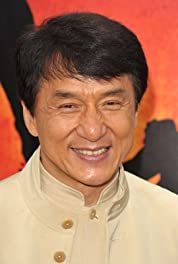 My practical advice was to “establish all props, locations and perspectives before; envision the fight; choose the best sequential-into-dramatic moments so it’s readable and impactful.”
My practical advice was to “establish all props, locations and perspectives before; envision the fight; choose the best sequential-into-dramatic moments so it’s readable and impactful.”
12. As for my final question, what advice would you give to those looking to get a start in the Industry? Whether that’s comics, acting, playwrighting, or radio.
The honest answer is no one knows.
The answer no one wants to hear, and the one most frequently given, is to just keep creating your own thing and putting it out there.
What people are really asking is, How do I get paid for writing?
First and foremost, be prepared to struggle. I had a friend in L.A. who was a great writer, but his “survival job” was writing speeches for health care executives. He might as well have been working at Target, because that kind of writing has nothing to do with the creative work he was looking for.
But you have to pay the rent, so you’re going to have to find that balance between work life, home life and your real career. The documentary The Legend of Leigh Bowery recounts how the future fashion designer and queer icon knew it was time to leave his survival job at Burger King — and better follow his artistic pursuits — when they wanted to make him manager. Be responsible to your situation, and find a way to trust those instincts so you don’t get stuck.
Unlike other professions, being an artist is also twice the work, and forces you to switch gears from right brain to left. You leave your blood on the page to create your project — but then you have to get it into people’s hands, which costs time to research, fill out forms, write summaries, and then it costs money to send out materials and entrance fees.
Market yourself and make your intentions known, but get your inroads to the industry when you can. So what if you’re working in the mail room? You’ll make your connections and move your way up. Just be mindful, especially in Hollywood, of only being perceived as the mail room person.
Steel yourself for rejection. If you were selling pencils, and someone hated your pencils, you would move on to the next client. Unfortunately, within the arts, you are your own product, and you can’t take it personally, or you will never survive. I heard of one casting director who wouldn’t hire any actor who looked like his hated brother-in-law. How would an actor have known that?
If someone gives you harsh feedback on your script, accept the feedback, then be honest with your own work, and see if what they said holds true.
Be prepared for no feedback. I recall Garfield creator Jim Davis saying he wallpapered his room with rejection letters.
At the end of the day, as long as you’re actively developing your craft, YOU ARE A WRITER.
Editor’s Note: Many thanks to Stephen for taking part in this interview!

